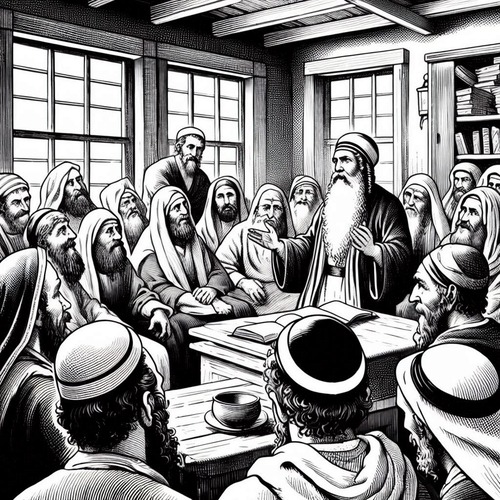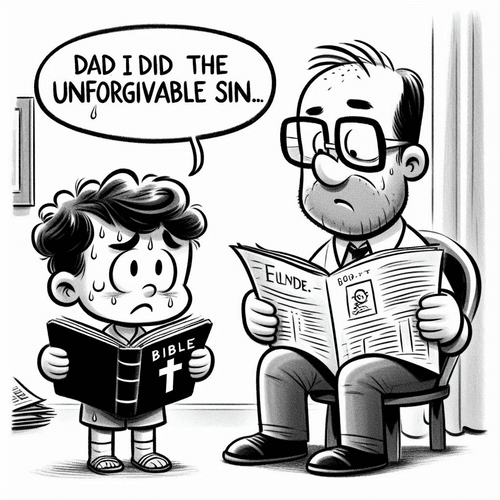Can Prophecies Have Multiple Fulfilments? The Bible’s Answer
When Jesus spoke of Jerusalem’s coming destruction, was He only talking about 70 AD? Or did His words also point to something far greater—His final return in glory? This question gets to the heart of how we understand Bible prophecy and its multiple layers of meaning.
The answer from Scripture is clear: many prophecies do indeed have multiple fulfilments, with both immediate and ultimate applications. This isn’t theological speculation—it’s a pattern woven throughout the Bible by divine design.
THE BIBLICAL FOUNDATION
The Bible presents prophecy as serving dual purposes. Peter explains the prophets “searched and inquired carefully” about “what person or time the Spirit of Christ in them was indicating” (1 Peter 1:10-11). This suggests prophecies often had both immediate relevance for their original audience and future significance beyond their initial context.
This dual nature reflects Scripture’s “already/not yet” structure. God’s kingdom has already come in Christ, yet we still await its full consummation. Many prophecies mirror this tension, finding partial fulfillment in history while pointing toward complete fulfillment at Christ’s return.
Scripture also operates through types and antitypes—Old Testament patterns that find their ultimate meaning in Christ. As Jesus told His disciples, all the Scriptures “concerning me” span “the Law of Moses and the Prophets and the Psalms” (Luke 24:44). This typological structure naturally creates multiple layers of prophetic fulfillment.
PRIME EXAMPLES FROM SCRIPTURE
The Olivet Discourse: Jerusalem’s Destruction and Christ’s Return
Jesus’ prophecy in Matthew 24 provides the clearest example of dual fulfillment. When the disciples asked about the temple’s destruction, Jesus gave signs that applied to both the immediate future and the distant end times.
The near fulfillment came in 70 AD when Roman armies destroyed Jerusalem exactly as Jesus predicted. False messiahs had indeed arisen, wars and famines had struck the region, and the temple was utterly demolished—all within “this generation” as Jesus specified (Matthew 24:34).
Yet Jesus also spoke of cosmic signs, the Son of Man’s return, and global tribulation that clearly extend beyond 70 AD. The same discourse addresses both the historical destruction of Jerusalem and the eschatological Day of the Lord, with the former serving as a preview of the latter.
Isaiah’s Immanuel Sign
When Isaiah prophesied “a virgin shall conceive and bear a son” (Isaiah 7:14), he was addressing King Ahaz’s immediate crisis with Assyria. The sign had relevance for that historical moment. While the Hebrew word almah can refer to a young woman, too, rather than necessarily a virgin in the technical sense, Matthew’s inspired interpretation (Matthew 1:22-23) reveals that Isaiah’s words found their ultimate and most precise fulfillment in Christ’s miraculous virgin birth—something that could only occur once in history.
Rather than contradicting the original context, Christ’s birth represents the ultimate fulfilment of what the sign pointed toward—God’s promise to be “with us” in our deepest need.
Joel’s Spirit Outpouring
Joel prophesied God would pour out His “Spirit on all flesh” in connection with cosmic signs and the “great and awesome day of the Lord” (Joel 2:28-32). On Pentecost, Peter declared “this is what was uttered through the prophet Joel” (Acts 2:16).
But Peter’s “this is that” language indicates the beginning of fulfilment, not its completion. The cosmic signs Joel described didn’t occur at Pentecost, pointing to an ultimate fulfilment still to come when God’s Spirit will be poured out in the final restoration of all things.
Daniel’s Abomination of Desolation
Daniel’s prophecy of the “abomination that makes desolate” (Daniel 9:27) found historical fulfillment when Antiochus Epiphanes desecrated the temple in 167 BC. Yet Jesus spoke of this same “abomination of desolation” as still future (Matthew 24:15), indicating another fulfillment was yet to come.
HOW THIS WORKS: BIBLICAL PRINCIPLES
This pattern of multiple fulfilments operates according to clear Bible principles.
- Scripture interprets Scripture—we understand prophecy by comparing spiritual things with spiritual, letting clearer passages illuminate more complex ones.
- All prophecy ultimately points to Christ and His redemptive work. The two-advent structure of Christ’s ministry naturally creates space for dual fulfilments—prophecies can find initial fulfilment in His first coming while awaiting complete fulfilment at His return.
- We must respect both the original historical context and the broader canonical meaning. Good interpretation doesn’t ignore what prophecy meant to its first audience, but it also recognises how God’s progressive revelation builds layers of meaning across redemptive history.
WHY THIS MATTERS
Understanding dual fulfilment isn’t just academic—it’s practical. When we see how God fulfilled His promises to Israel through both historical events and Christ’s work, we gain confidence that His future promises are equally certain.
The destruction of Jerusalem in 70 AD is historical proof that Christ’s prophetic words are trustworthy. If He accurately predicted that catastrophe, we can trust His promises about His return and the final restoration of all things.
God’s faithfulness in partial fulfilments guarantees His faithfulness in ultimate fulfilments. The same divinesovereignty that orchestrated Jerusalem’s destruction will orchestrate the final Day of the Lord. Past fulfilments become present encouragements and future hopes.
CAN PROPHECIES HAVE MULTIPLE FULFILMENTS? RELATED FAQs
How do Reformed scholars distinguish between dual fulfilment and allegorical interpretation? Reformed theologians like Vern Poythress and Dennis Johnson emphasise that dual fulfillment respects the literal-historical meaning of the original text while recognising God’s sovereign design to embed deeper meanings. Unlike allegorical interpretation, which often ignores historical context, dual fulfilment builds upon the original meaning rather than replacing it. The key is that both fulfilments flow naturally from the text’s grammatical-historical sense.
- What about prophecies that seem to have failed or remain unfulfilled? John Calvin taught that what appear to be “failed prophecies” often reflect conditional elements or delayed timing rather than actual failure. For instance, Jonah’s prophecy that Nineveh would be destroyed in 40 days was conditional upon their response (though unstated). Reformed scholars generally argue God’s prophetic word never fails, but human understanding of timing and conditions may be incomplete.
- How does dual fulfilment relate to the “sensus plenior” (fuller meaning) of Scripture? Reformed theologians like Raymond Brown have argued the sensus plenior—the fuller meaning intended by God but not fully grasped by the human author—provides the theological foundation for dual fulfilment. The Holy Spirit who inspired Scripture can embed meanings that become clear only through progressive revelation. This isn’t eisegesis but recognition of divine authorial intent across the entire canon.
Do all Old Testament prophecies have New Testament fulfilments? While Reformed theology sees Christ as the ultimate focal point of all Scripture, scholars like Geerhardus Vos distinguish between directly messianic prophecies and those that contribute to the broader redemptive-historical framework. Not every prophecy requires explicit New Testament citation to have Christological significance. Some find their “fulfilment” in the broader pattern of God’s covenant faithfulness revealed in Christ.
- How do we avoid the danger of seeing dual fulfilment everywhere? Westminster Seminary scholars emphasise dual fulfillment must be grounded in textual and canonical evidence, not imposed upon the text. Look for New Testament interpretation of Old Testament prophecies, typological patterns established elsewhere in Scripture, and clear linguistic or thematic connections. The principle is restraint—dual fulfillment should be demonstrated, not assumed.
- What’s the difference between dual fulfilment and typical dispensationalist “gap theory”? Reformed scholars like O Palmer Robertson argue dual fulfilment maintains covenant continuity while dispensationalist gap theory often creates artificial divisions between Israel and the church. In Reformed understanding, both fulfilments serve the same redemptive purpose and covenant promises. The “near” and “far” fulfilments aren’t separate programs but stages in God’s unified plan of redemption.
How does dual fulfilment strengthen apologetics and evangelism? Richard Pratt Jr and other Reformed apologists note historically verified fulfilments (like Jerusalem’s destruction in 70 AD) provide evidential support for Christianity’s truth claims. When unbelievers see that biblical prophecies have already come to pass with remarkable accuracy, it builds credibility for prophecies yet to be fulfilled. This creates natural evangelistic opportunities to discuss Christ’s return and final judgement.
CAN PROPHECIES HAVE MULTIPLE FULFILMENTS? OUR RELATED POSTS
Editor's Pick

‘Sell Everything You Have…’: Are We To Do So Literally?
When Jesus encountered the rich young ruler in Matthew 19:21, His words cut through with startling clarity: “If you want [...]

Why Jesus Said ‘It’s Better I Go Away’…
THE SUPERIOR GIFT OF THE HOLY SPIRIT “Nevertheless, I tell you the truth: it is to your advantage that I [...]

What About Those Who’ve Never Heard the Gospel?…
WILL GOD SHOW THEM MERCY ON JUDGEMENT DAY? Few questions tug at the Christian’s heart like this one. Picture the [...]

Cities of Refuge: Foreshadowing Our Safe Haven in Jesus
Picture this: A man is chopping wood with his neighbour when the axe head flies off the handle, striking and [...]

Testament to Design: The Engineering Marvel of Elephants
Picture an African elephant delicately plucking a single acacia leaf with the tip of its trunk, then moments later using [...]

Blue Whales: Mammoth Icons of Intelligent Design
Imagine an animal so massive its heart alone weighs as much as a small car, yet so precisely engineered it [...]

Do Unbelieving Kids Disqualify Church Leaders?
REFORMED PERSPECTIVES ON 1 TIMOTHY 3 AND ELDER QUALIFICATIONS Every pastor knows the heartbreak. A faithful elder who has served [...]

Why Did God Kill Onan? Wasn’t the Punishment Disproportionate?
The story of Onan in Genesis 38 troubles many. Why would God strike down a man for what seems like [...]

Is God Preparing Me for Ministry? How May I Know for Sure?
The question haunts many faithful believers. You’re serving faithfully in your local church, perhaps teaching Sunday school or leading a [...]

Ephesians 1:13: Was the Spirit’s Indwelling Promised of Old?
When Paul declares believers are “sealed with the promised Holy Spirit” in Ephesians 1:13, one word jumps off the page: [...]
SUPPORT US:
Feel the Holy Spirit's gentle nudge to partner with us?
Donate Online:
Account Name: TRUTHS TO DIE FOR FOUNDATION
Account Number: 10243565459
Bank IFSC: IDFB0043391
Bank Name: IDFC FIRST BANK






